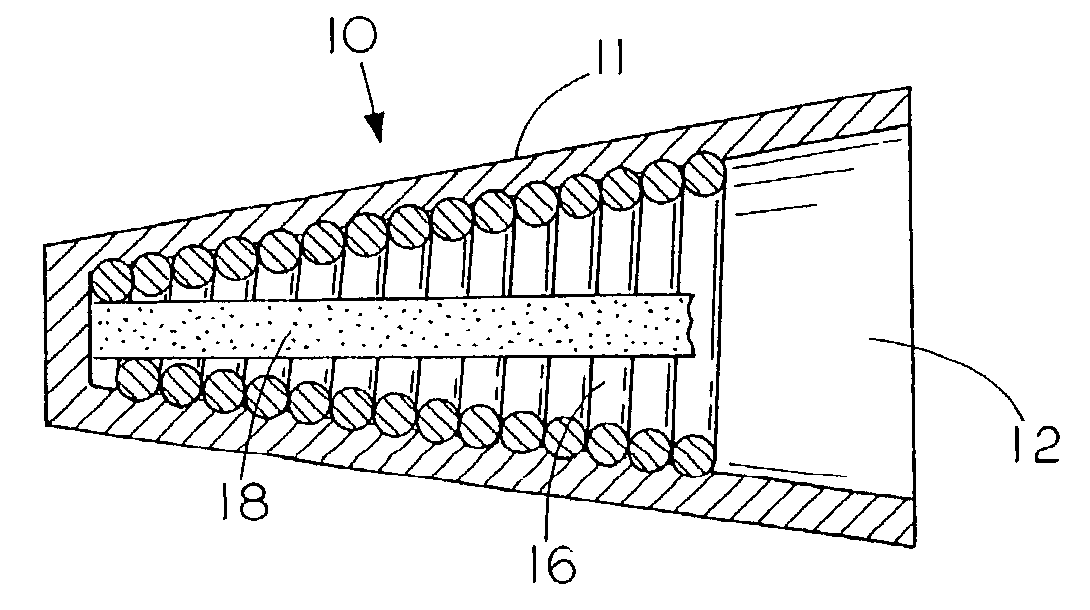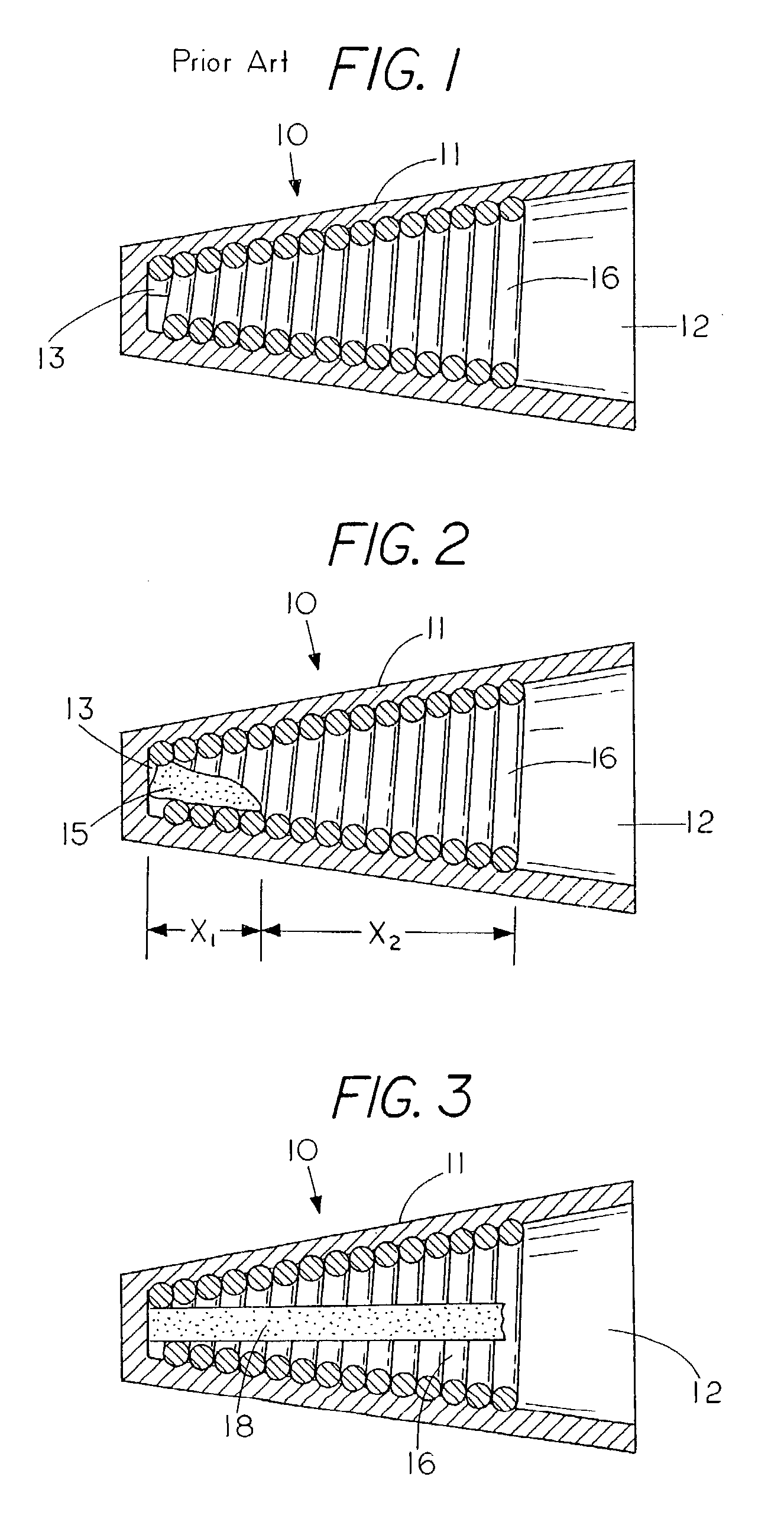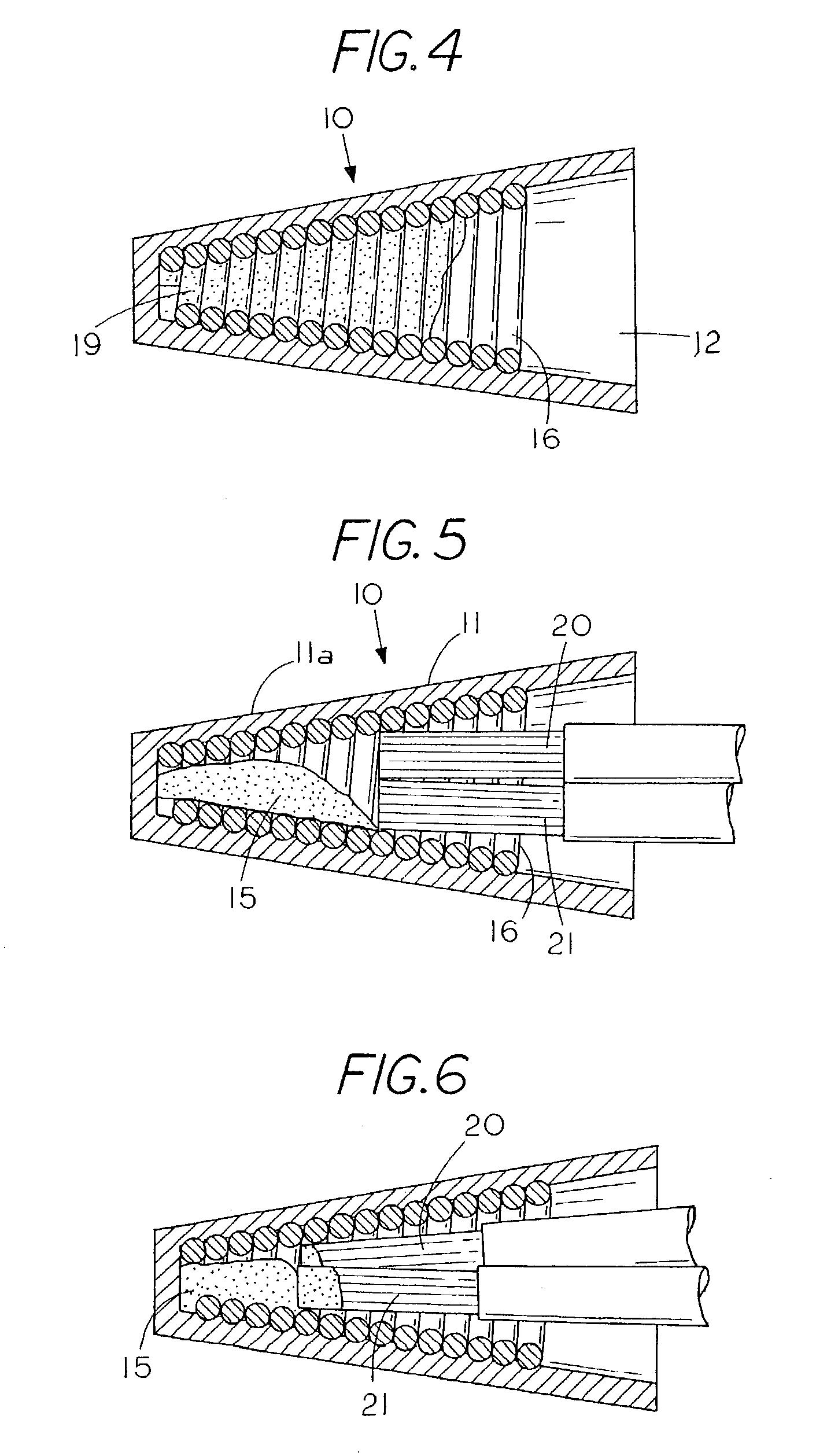Low torque twist-on wire connector
a twist-on wire connector, low-torque technology, applied in the direction of connecting end caps, connecting contact member materials, conductor screwing into other, etc., can solve the problems of reducing the integrity of the connection between the wires in the twist-on wire connector, time-consuming prior art process, etc., to achieve the effect of reducing the rate of torsonial resistance, reducing the frictional resistance to the rotation of the wire, and low resistan
- Summary
- Abstract
- Description
- Claims
- Application Information
AI Technical Summary
Benefits of technology
Problems solved by technology
Method used
Image
Examples
Embodiment Construction
[0019]Referring to FIG. 1, reference numeral 10 generally identifies a conventional twist-on wire connector. Wire connector 10 includes an electrical insulating housing 11 having an open end 12 and a closed end 13 with the diameter of open end 12 being larger than the diameter of closed end 13. A spiral thread 16 extends axially inwardly in housing 11. The diameter of spiral thread 16 proximate open end 12 of housing 11 is larger than the diameter of spiral thread 16 proximate closed end 13 of housing 11 so that wires are squeezed into tighter contact with each other as the wires are twisted into the spiral thread. While the embodiment shows that the spiral thread is a metal spring it is envisioned that the spiral thread could be integrally formed within the housing of the twist-on wire connector.
[0020]FIG. 2 shows an embodiment of the present invention having a self-adhering lubricant 15 positioned at the closed end 13 of connector 10. The self-adhering lubricant 15 extends an axia...
PUM
| Property | Measurement | Unit |
|---|---|---|
| Temperature | aaaaa | aaaaa |
| Diameter | aaaaa | aaaaa |
| Electrical resistance | aaaaa | aaaaa |
Abstract
Description
Claims
Application Information
 Login to View More
Login to View More - R&D
- Intellectual Property
- Life Sciences
- Materials
- Tech Scout
- Unparalleled Data Quality
- Higher Quality Content
- 60% Fewer Hallucinations
Browse by: Latest US Patents, China's latest patents, Technical Efficacy Thesaurus, Application Domain, Technology Topic, Popular Technical Reports.
© 2025 PatSnap. All rights reserved.Legal|Privacy policy|Modern Slavery Act Transparency Statement|Sitemap|About US| Contact US: help@patsnap.com



